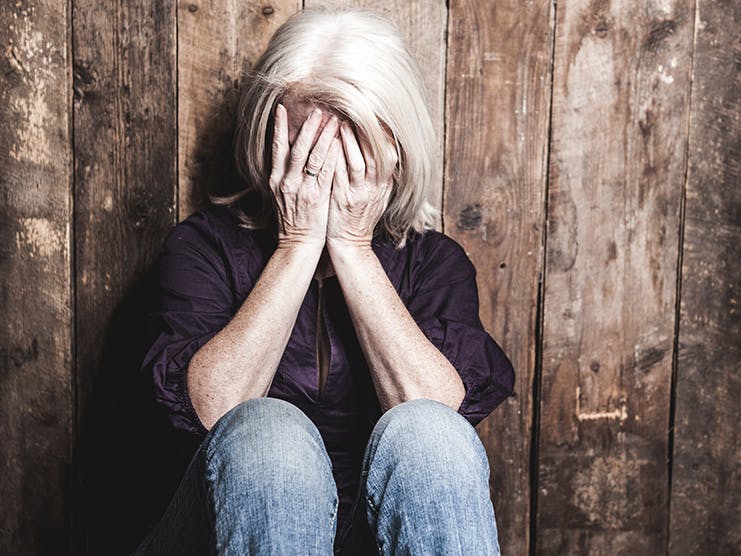
Although it’s tough to talk about, elder abuse is surprisingly common.
Knowing how to recognize elder abuse, and reduce the risk of it, is vital as the baby boomer generation grows older.
What is elder abuse?
Elder abuse is a term used to describe violence against people above the age of 65. The abuse is perpetrated by someone close to the victims, including family, like children or partners, or their caregivers. According to the American College of Surgeons, elder abuse can be physical, psychological or sexual violence, neglect, or financial exploitation.
About one in ten Americans over age 60 have reported experiencing some form of abuse. Unfortunately, according to the National Council on Aging, the actual number might be a lot higher since elder abuse often goes unreported. One study found that only one in 24 cases of abuse are reported to the police.
"Signs can be hard to recognize, especially with neglect and physical abuse," trauma surgeon Dr. Daniel Stephens told Mayo Clinic’s news service. "It's difficult to tell whether falls, for instance, are accidental or from abuse."
That’s why it’s important to know your own risks and those of others. Read on to understand warning signs and learn how to reduce the risk of elder abuse.
Risk factors
While it is of course never the fault of the victim, there are several factors that put someone at greater risk of becoming a victim of abuse. These risk factors include:
- Physical disability or functional dependence
- Poor physical health
- Poor mental health
- Cognitive impairment
- Low income
There are also factors that increase the risk that someone will become the perpetrator of elder abuse. These include:
- Current diagnosis of mental illness
- Current substance abuse
- High levels of stress
- Inadequate training of caregiver responsibilities
- Past experience of traumatic events
- Financial dependency on the victim
- Past family conflict with the victim
- Lack of social support
There are institutional risk factors, as well. Nursing homes and assisted living communities often have staff that is overworked and underpaid, which can lead to frustration, exhaustion, and care that is rushed or even negligent.
Residents of nursing homes could be at higher risk of abuse because of a few factors. If you are looking into a nursing home for a family member, be sure to know the warning signs of higher risks of elder abuse there, including:
- High turnover rates among staff
- High-stress working conditions
- Lack of staff oversight
- Staff who act rudely to residents
- Negligent hiring processes, including background checks that are not thorough
It’s important to note that many nursing homes have excellent staff who truly care about their residents, even when the work conditions are not ideal.
Preventing elder abuse
While elder abuse can’t always be prevented, there are certainly ways to reduce risks.
- Keep yourself (or the older person in your life) active. Declining physical health and increased physical dependence on a caregiver puts an older person at greater risk of abuse. Staying physically active will reduce your risk of dependence and enhance your overall health.
- Stay engaged in the community. Having a social support system and community will lead to less isolation, which can increase risk of elder abuse.
- Support primary caregivers. Caregiving can be a high-stress experience. If it’s possible to have more than one caregiver, this will help to reduce the risk of a caregiver becoming overworked, exhausted, and potentially frustrated.
- Protecting people against high-risk caregivers. Be sure to do thorough background checks on anyone applying for the role of caregiver.
- Be aware of financial abuse. Stay informed about scams that target older adults, especially those that occur through the internet or phone calls. If necessary, designate someone you trust to handle your bank accounts or investments.
If you’re worried that a parent or friend might be a victim of elder abuse, be sure to ask questions and have an open discussion about their circumstances.
Learn about Medicare coverage for caregivers
Know the signs
While elder abuse often goes unreported, you can stay alert to the warning signs. Below are several signs to watch for:
- Injuries such as burns, broken bones, cuts, or scratches
- Poor hygiene
- Weight loss, malnutrition, or dehydration
- Bed sores or other preventable conditions
- Appearance of being over- or under-medicated
- Symptoms of depression, anxiety, or confusion
- Withdrawal from family and friends
- Unexplained money transactions or changes in spending habits
What to do if you suspect abuse
If you are an older person who is being abused and in immediate danger, call 9-1-1 or your local police.
The Eldercare Locator helpline assists older people who are victims of abuse. The telephone number is 1-800-677-1116.
Be sure to tell at least one person, whether it is a friend, doctor, or trusted family member, what you are experiencing, so they can help you navigate this difficult time.
If you suspect someone else is experiencing abuse, you can contact the Adult Protective Services (APS) agency in the state where the victim lives. You can find that number by visiting the State Resources section of the National Center on Elder Abuse website.
Additional resources
Elder Abuse Resources
External Website Link
16 Tips for Aging in Place
Internal Website Link
Can Medicare Pay for a Caregiver?
Internal Website Link
How Does Medicare Work?
Internal Website Link
Medicare Fraud Costs $65 Billion a Year
Internal Website Link


